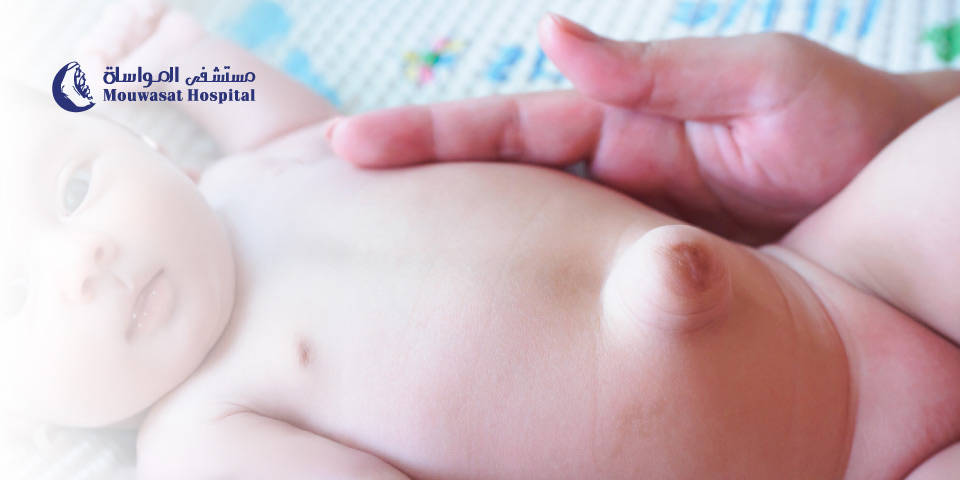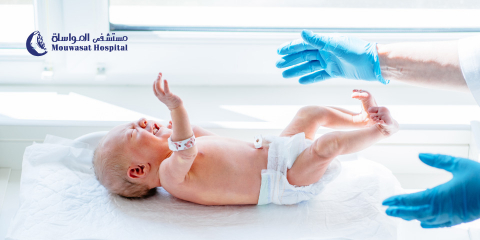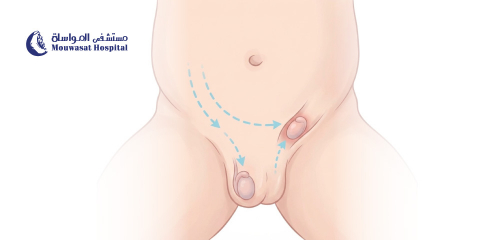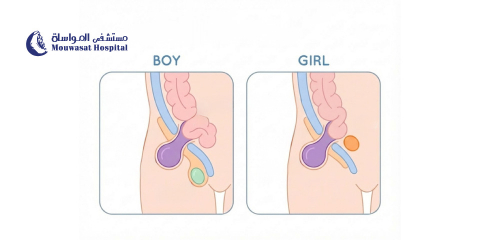
Umbilical Hernia in Children: Causes, Symptoms, and Treatment
An umbilical hernia in children is a common condition that often worries parents, especially first-time parents. In most cases, it is not dangerous and resolves on its own during the early years of life.
Parents frequently ask:
- Is umbilical hernia in children dangerous?
- When does an umbilical hernia need surgery?
- Can it heal without medical intervention?
This article explains the causes, symptoms, diagnosis, treatment options, and surgical indications for umbilical hernias in children.
What Is an Umbilical Hernia in Children?
An umbilical hernia occurs when part of the intestine protrudes through the abdominal wall near the belly button, creating a visible bulge. This bulge often becomes more noticeable when the child cries, coughs, or strains.
Umbilical hernias are very common in newborns and infants under 6 months old, affecting about 20% of babies. While most cases occur in infants, older children and even adults can develop umbilical hernias.
Causes of Umbilical Hernia in Children
Umbilical hernias happen when the opening in the abdominal wall (where the umbilical cord passed during pregnancy) does not close completely after birth.
- Risk factors include:
- Premature birth
- Low birth weight
- Childhood obesity
- Genetic conditions such as Down syndrome
Signs and Symptoms of Umbilical Hernia
A visible bulge near the belly button is the main sign.
The size of the bulge may change:
- Larger when the child cries, coughs, or strains.
- Smaller when the child is calm or lying down.
Warning signs that require urgent medical attention:
- Severe abdominal pain
- Vomiting
- Skin discoloration around the belly button
How Is an Umbilical Hernia Diagnosed?
Doctors usually diagnose an umbilical hernia through a physical examination.
The doctor may gently push the hernia back into the abdomen (called reduction). If it can be pushed back, the hernia is reducible, meaning the intestine is not trapped.
If the hernia cannot be reduced, it may indicate incarceration, which is an emergency.
In rare cases, an ultrasound may be ordered to check for complications.
Treatment for Umbilical Hernia in Children
Most umbilical hernias are harmless and close on their own by age 4 or 5.
Surgery may be recommended if:
- The hernia persists beyond age 4–5
- The hernia is very large
- There are complications such as incarceration
Important:
Do not try home remedies like taping the hernia or using coins. These methods do not help and may cause infections.
When Is Surgery Needed?
Surgery is usually advised in the following cases:
- Hernia does not close by age 4–5
- Hernia becomes trapped (incarcerated)
- Large hernia causing cosmetic or functional issues
Umbilical Hernia Surgery in Children
A simple procedure performed under general anesthesia
- Usually takes 30–45 minutes
- Most children go home the same day
- Minimally invasive techniques and cosmetic incisions may be used to reduce scarring
Advantages of Performing Umbilical Hernia Surgery for Children at Al Mouwasat Hospital
The Pediatric Surgery Department at Al Mouwasat Hospital provides specialized surgical care for infants, children, and adolescents through a comprehensive approach that includes consultation, surgery preparation, the procedure itself, and post-operative follow-up.
- A highly qualified medical team of board-certified pediatric surgery consultants
- A child-friendly treatment environment with emotional and developmental support programs
- Pediatric-specific anesthesia techniques
- Focus on minimally invasive surgical procedures
- Post-operative care and pain management in dedicated pediatric intensive care units
- Continuous support and education for parents throughout the treatment journey
- Therapeutic nutrition programs for children
All of this is delivered in close collaboration with supporting departments such as anesthesia, pediatric intensive care, and neonatal units, ensuring integrated and safe care.
Medical Disclaimer
This article is for educational purposes only and is not a substitute for professional medical advice. Always consult a pediatrician for diagnosis and treatment.
FAQs About Umbilical Hernia in children
Is umbilical hernia in children dangerous?
Usually not, but complications like incarceration require urgent care.
Does an umbilical hernia go away on its own?
Yes, most cases resolve by age 4–5.
When does an umbilical hernia need surgery?
If it persists beyond age 4–5 or complications occur.
How long does umbilical hernia surgery take?
About 30–45 minutes, and the child usually goes home the same day.
Read more:
Undescended Testicle in Children: Causes, Symptoms, and Treatment
Inguinal Hernia in Children: Causes, Symptoms, and Treatment




